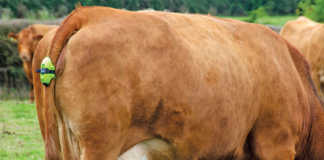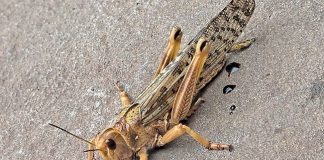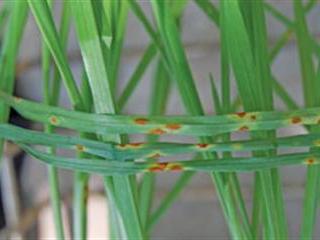
“Rust never sleeps,” Dr Norman Borlaugh, the father of the Green Revolution, once famously remarked. Certainly, the fight against this ancient enemy is as determined as ever, with South African researchers making significant contributions. Wheat breeding occupied a major slot at the international Plant Breeding Symposium at the Protea Hotel Kruger Gate in Mpumalanga from 12 to 14 March 2012.
Many presentations focused on ongoing efforts by breeders to develop resistance to mutations in rust fungi, and the excellence of South African science and collaborative research in this regard was recognised by delegates. In his keynote address, Dr Evans Lagudah of the Commonwealth Science and Industrial Research Organisation (CSIRO) in Australia provided an overview of constraints in wheat production, showing that leaf rust, yellow stripe rust and stem rust are the main pathogens.
About 166 genes that confer resistance have been recorded, some of which are effective in seedlings, some in adult plants, and others against specific rust strains. The lifespan of such resistance is relatively short. However, to ensure durable resistance it is necessary to combine various genes, including those that provide moderate protection against all three rusts, such as the Lr34 leaf rust gene.
The defence mechanism of the plant operates through its immune recognition of the fungus. Currently, the mechanism of rice that prevents sporulation of the fungus is being studied, as its genes might apply to wheat. “Stacking genes for rust resistance has been achieved through conventional breeding but genetic modification (GM) technology offers new techniques,” Dr Lagudah explained.
These allow genes such as Yr29 to be cloned to increase the number of gene copies or ‘cassettes’ of fused combined genes that will be inherited as one without risking segregation in offspring. An example is an experimental Lr34/Yr18.Yr36/Lr21 with four resistance genes in the cassette – two for leaf rust and two for yellow stripe rust. Another technique is to alter related resistance genes in other grain species for incorporation into wheat. The various potential interactions between such genes need to be studied in more detail.
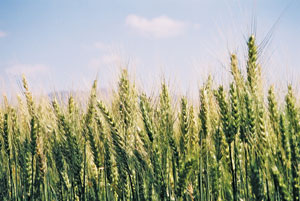
Healthy wheat in the Burgersfort area. Photo by Wynand van der Walt
Dr Lesley Boyd of the John Innes Centre in the UK investigated yellow stripe rust resistance by comparing genes with race specific and non-race specific action. Avirulence factors trigger resistance response in the plant through the R-gene. “Breeding projects in the UK are intended to find good genetic resistance solutions to move away from intensive fungicide spraying programmes, but must consider market requirements: adapted varieties for farmers and wheat quality standards for end-users,” she explained.
Tackling the notorious UG99
The UG99 rust strain is one of the more recent devastating fungal mutations and variant strains identified in South Africa. Samples of the African wheat collection were grown out in Kenya and South Africa and showed infection of 20% to 50% in Kenya but higher rates at Greytown. Dr Renée Prins of Cengen and the University of the Free State applied molecular DNA diagnostic techniques to establish whether resistance in surviving lines was new or known. The few lines that showed consistent adult plant resistance were crossed with susceptible wheat to identify resistance genes.
The ARC-Small Grains Institute focused on breeding for multiple resistance traits in commercial varieties, principally Kariega. Researcher Dr Vicky Tolmay reported “that seedlings of some 1 600 lines from progenies of Kariega crosses were tested in greenhouses, resistant ones transferred to pots, and DNA diagnostics used to detect presence of target genes”. Only plants with all target genes were retained.
Prof Zakkie Pretorius of the University of the Free State has found that local wheat varieties, especially winter wheats, have high levels of resistance to UG99 rust. Comparing seedling and adult plant data showed that resistance in certain varieties might not be durable, however. Several South African breeding institutions are engaged in incorporating adult-plant resistance into their material.
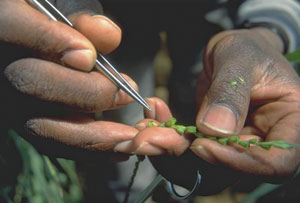
Emasculation of wheat florets followed by hand pollination to make controlled crosses. Phot courtesy of ARC-SGI.
Another approach is to take a chromosome with resistance genes to both leaf and yellow stripe rust from Aegilops, a wild progenitor of wheat, and add it to cultivated wheat. Dr Heyns of the ARC-SGI, Stellenbosch, and Dr Marais of South Dakota State University in the US selected for marker genes linked to resistance genes and against other undesired Aegilops genes. Some 10 potentially useful lines from 159 progenies will be screened for retained resistance genes.
Fusarium
Another problem pathogen is fusarium head blight of wheat. Joint breeding between researchers at the ARC-SGI and the University of the Free State has developed lines with multiple rust resistance by crossing three varieties, followed by breeding a group of head blight-resistant lines. Lines from the two groups will be interbred so that varieties with resistance to both rust and head blight can be developed, while selecting for improved yield and protein quality.
Contact Wynand van der Walt on 083 468 3471











